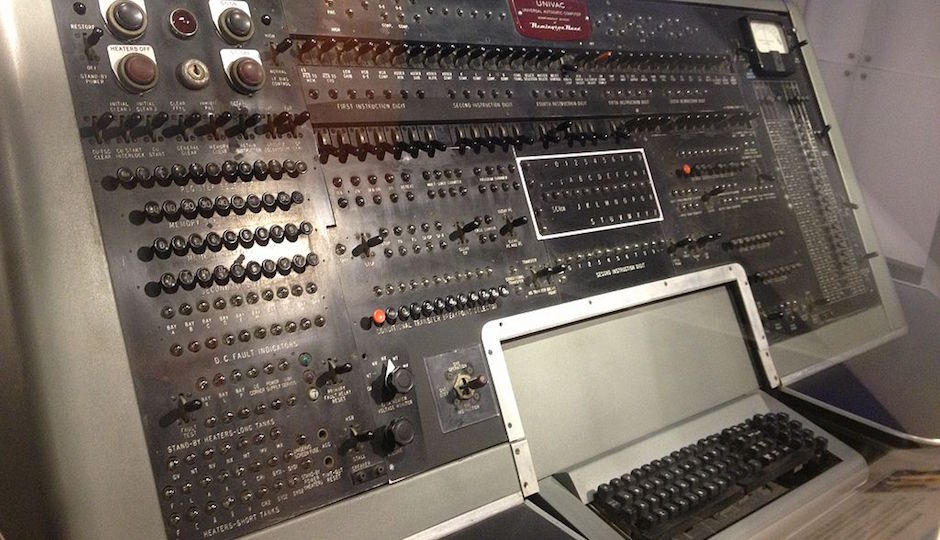65 Years Ago Today, Philadelphia Helped Birth the Commercial Computing Revolution

UNIVAC I control station on display at the Computer History Museum. | ArnoldReinhold, shared under a Creative Commons license.
Today is the anniversary of a major development in computing history — and it happened right here in Philadelphia.
On this date in 1951, the U.S. Census Bureau signed a contract for the first commercial computer in the U.S. with J. Presper Eckert and John W. Mauchly, who had designed the ENIAC computer at the University of Pennsylvania for the U.S. War Department toward the end of World War II. The two formed their own company after the war, which became the Philadelphia-based subsidiary of Remington Rand Inc., where the computer was developed and manufactured.
“The ENIAC was intended exclusively for military use,” Adam T. Veres wrote in 2010 for the Pennsylvania Center for the Book. “Once the benefits of an automatic machine were witnessed, it is no surprise that the commercial sector became interested in how the computer could be useful in their area.”
The new creation was the UNIVAC — The Universal Automatic Computer. The first model went to the Census; CBS bought one of the early units, as well, which led to an infamous moment in the 1952 election.
As Time Magazine reported in 1992: “When CBS hired a newly minted Univac to analyze the vote in the 1952 presidential election, network officials thought it a nifty publicity stunt. But when the printout appeared, an embarrassed Charles Collingwood reported that the machine couldn’t make up its mind. It was not until after midnight that CBS confessed the truth: Univac had correctly predicted Dwight Eisenhower would swamp Adlai Stevenson in one of the biggest landslides in history, but nobody believed it.”
The full history of the UNIVAC and its development can be found in a 1990 oral history conducted at the Smithsonian Institution.


